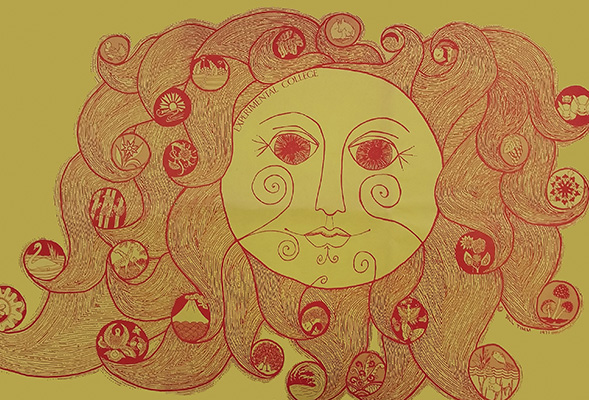Common Chords Experimental College
San Diego State College's volunteer-run Experimental College reflected the 1960s' groovy ways, but was also incredibly forward-thinking.

This story appears in the summer 2016 issue of 360: The Magazine of San Diego State University.
B.J. Nystrom (’66) never set out to reshape San Diego State College’s curriculum. In 1967, the political science graduate had returned to SDSC as a master’s student, and he just wanted to teach an informal class on eviction law to his friends and their friends. The self-described “East County redneck” from La Mesa had found a place within the progressive student movement that pervaded college campuses in the 1960s, and his friend Ann Monkerud had an idea for how he could teach his class: Start a whole new college.
In the late 1950s, San Francisco State College had pioneered an Experimental College, with courses taught by volunteers, enrollment open to anyone who wanted to attend, and no fees. Monkerud wanted to bring something similar to SDSC and Nystrom was up for the challenge.
For the Experimental College to work, they needed space, which meant going through official channels to get approval to meet in classrooms. Nystrom put his political science background to use handling the administrative side of things while Monkerud handled the academics and put together a course catalog. Officially, the Experimental College became a student organization. The late, highly influential political science professor Henry Janssen served as its requisite faculty advisor.
Two courses were offered initially: “History of Vietnam” and “Underground Newspaper Reporting.” The Experimental College’s inaugural class included 28 students.
Though many colleges and universities across the country kept a nervous, watchful eye over similar student movements, Nystrom recalls SDSC’s administration being generally supportive of their efforts.
“We had nobody breathing down our necks,” he said. “Not too much oversight or interference.”
By the fall semester of 1968, the course catalog had grown to 22 classes. That spring, there were 38. By 1970, there were 54 classes and approximately 1,200 students attending them. (The student population was around 20,000 at that time.) Some courses were, well, quirky: “UFO’s: Yesterday, Today and Tomorrow;” “Natal Astrology;” “Through the Portals of Anubis.” Others, like “Candlemaking,” “Tropical Fish,” and “Auto Mechanics for Women,” offered practical skills. And naturally, given the era, there were countless guitar classes.
“In terms of academic seriousness, we had real teachers and real classes,” Nystrom said. “It wasn’t just groovy-man guitar instructors playing in the quad—though we had those, too.”
But another subset of courses had a lasting impact on SDSC that carries through to today. The Experimental College was the first organization on campus to offer courses like “Black Literature,”“The Homosexual in Society” and “Vanishing Wildlife.” The Experimental College also hosted some meetings and classes of the nascent (though independently organized) Women’s Studies Center. These might be routine parts of SDSU’s curriculum now, but back then they were seen as acts of revolutionary learning. Student interest and engagement with these courses helped spur the creation of formal academic programs dedicated to these areas, Nystrom said.
“It was never intended to be a curriculum reform movement,” he said. “But that was one of its unintended consequences.”
Nystrom never did get to teach his eviction law class. After the Experimental College’s first year, he left it to join SDSC Associated Students, eventually being elected AS president in 1971. He lives in the College Area, remains active in SDSU through the College Area Community Council and is a lifelong member of the SDSU Alumni Association.
Lonnie Rowell (’70, ’83), now a professor in the School of Leadership and Education Sciences at the University of San Diego, took over the Experimental College and shepherded it through the mid-1970s, at which point it folded. Nystrom estimates that over the Experimental College’s lifetime, some 7,000 students took its classes.



